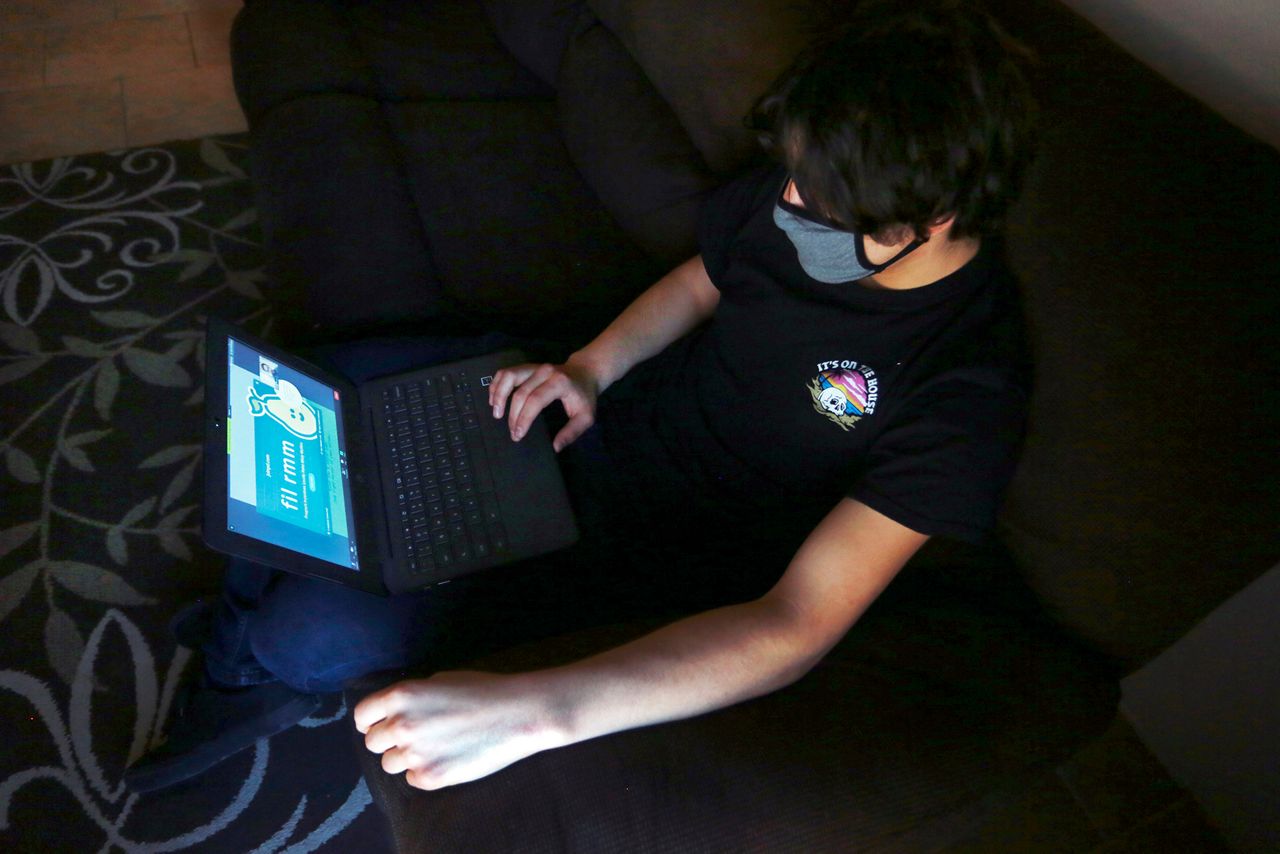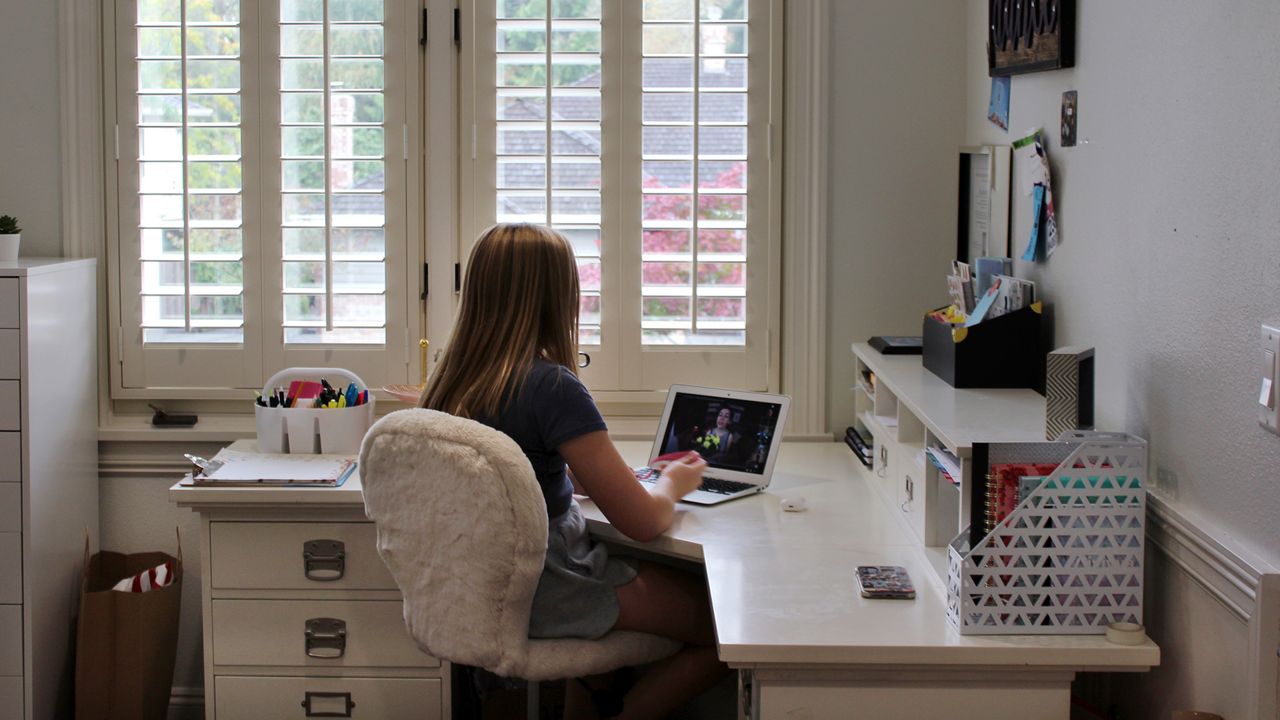COLUMBUS, Ohio — Many families in Ohio will have the choice to continue to enroll their children in remote K-12 learning options for the fall 2021-2022 school year.
Districts offering remote options said students should continue to have the choice to learn virtually because the COVID-19 health crisis is ongoing and younger students are not yet eligible for vaccination.
Most of the major urban school districts in Ohio are planning to continue a remote-learning choice.
The Cleveland Metropolitan School District is exploring a remote option that would offer routine interaction for students with district teachers, rather than the self-paced Digital Academy that is asynchronous, the teacher’s union said.
Columbus City Schools' May enrollment period allowed up to 2,000 students to opt into a remote model.
Cincinnati Public School District approved two digital options for the upcoming school year: The Cincinnati Digital Academy, and a concurrent-learning option that rolls out in the fall for classes with the highest number of remote-only students.
By spring, that option will be available for all classrooms.
Dayton Public Schools went with a limited remote approach, allowing medically fragile students with underlying health conditions to learn virtually.
Outside of the major cities, other districts have also announced remote options.
The debate around virtual schooling programs has drawn more attention in recent weeks following the announcement for New York City Public Schools that remote learning will not be an option for the 2021-2022 school year.
A number of school districts in Ohio, particularly in urban areas, finished the schools year in hybrid-learning models where students attend in-person for part of the week.
Officials are hopeful that progress controlling COVID-19 will continue through the summer allowing five day in-person learning models across the state in the fall.
The state is reporting continued progress against COVID-19 as hospitalization numbers near the lowest level since the pandemic began. Ohio is behind the nationwide rate for vaccine uptake, reporting a 46% immunization rate ranking 33rd.

The Ohio Department of Education is not dictating a recommendation one way or the other as far remote options, according to an official who asked to share the department’s stance on background.
“The DOE has not and would not say, ‘You guys all have to be back,’” the official said.
The department will continue to track the learning models of Ohio’s schools. As of the last update on May 19, 530 districts were in person five days a week, 78 were hybrid, and one was fully remote.
Ohio has deferred to local districts and health departments to make decisions related to learning models throughout the pandemic, and the department will continue to do so, the official said.
Columbus City Schools Chief Academic Officer Terri Breeden said in a virtual meeting in May that the district is switching to a new model, “BlendEd,” which will provide more synchronous learning for students with greater access to teachers during school hours. The model is allowable by the Ohio Department of Education, she said.
By 2023, the district plans to have completely switched over to its new digital model, offering the district’s own curriculum on the online platform with full-time teachers. The 2021-22 year will be a transition year as the district moves away from the Digital Academy it offered this year, according to the district.
The Office of the Governor did not respond to an inquiry on continuing remote learning.
Ohio Republican Party Communications Director Tricia McLaughlin said in a statement, “The Republican Party has been and continues to be a champion of school choice for children and families.”
President of the Cleveland Teachers Union Shari Obrenski said it’s critical to have a virtual option at least until all students are eligible for a vaccine, which will not be the case when the school year begins.
Obrenski said she expects the district to continue to have challenges with the coronavirus among students until vaccination is available to all. A significant number of families in the district are not comfortable with in-person learning at this time, she said.
A segment of the student population also preferred learning virtually this year for non-health reasons, so she said it may be wise for pandemic-style virtual learning to continue indefinitely.
“We have a virtual academy that we've had in place for a long time, but we are also exploring a remote option more similar to what we had been doing with the majority of our students throughout most of last year,” Obrenski said.
In Dayton, the teacher’s union supports the district’s plan to offer virtual learning to children with underlying health conditions. For these students, it may not be in their health interest to be in a congregate environment like a classroom, Dayton Education Association President David Romick said.
Teachers will not be able to work virtually next year, but due to the downward trends in COVID-19 numbers and the widespread availability of vaccines, Romick said the union is on board with moving toward more normal schooling in the fall. Masks will not be required by the district next fall unless there is an unexpected reversal in the coronavirus trends, he said.
“Staff and students' safety are always the priority here,” he said. “But as long as the COVID metrics continue to trend in the way they're currently trending — and hopefully the community will be continuing to become vaccinated — we'll be comfortable with the district's current plan,” he said.
Romick said it would be a mistake for state lawmakers to intervene with local districts’ 2021-2022 learning models.
“We need to maintain local control as much as possible because every community is different, and we need to maintain that approach so that the school district can service its own community as it knows best,” he said.
Obrenski agreed that it would be wrong for state lawmakers to try to bring everyone back to school like New York City. She said she hopes schools are allowed to proceed with the polices the districts and unions establish along with guidance from health officials.
“I'm not sure that our legislature can have it both ways. Either we have home rule, or we don't,” she said. “For them to interfere with decisions that we would make on a local level, with regard to the policies that we think are in line with CDC and protecting the health and safety of our students because it doesn't line up with them politically, would be pretty disingenuous as to what they tend to espouse as their core political beliefs.”



